HIBISCUS TEA: OVERVIEW
Skip Ahead To:
Hibiscus Tea is a herbal tea made from the red calyces or leaves of the Roselle flower (Hibiscus sabdariffa). It goes by many different names including, but not limited to, Agua de Jamaica, Rosella, Sorrel, Zobo, and Florida Cranberry. Whatever you call the tea, that doesn’t change the fact that it can provide the consumer with many health benefits that make it so popular. Hibiscus Tea is popular in the Southern Hemisphere, among many island nations, Mexico, Central America, and African Nations.The tea has also become very popular in North America as more people are discovering the healing benefits that this tea can give. You can learn more about it on this Hibiscus Tea Ultimate Guide.
Prior to Drinking Hibiscus Tea
First, as an Amazon Associate, I earn from qualifying purchases.
I recommend speaking with your doctor or healthcare provider prior to consuming any form of herbal tea, including Hibiscus Tea. Hibiscus tea is safe when consumed in moderate amounts and has no negative effects on the kidney or liver when drank responsibly. It may react differently if you are currently taking any prescription medicines, so that’s why it is better to be safe rather than sorry. Hibiscus tea helps lower blood pressure, but this means it may not mix well with other blood pressure medications. Individuals that are currently taking these medications should be particularly careful.
HIBISCUS TEA: ULTIMATE GUIDE
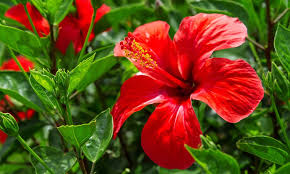
Please note: This post contains affiliate links. An affiliate link means that we may earn advertising/referral fees if you make a purchase through our links.
You are probably already familiar with the beautiful appearance of the Roselle flower. This flower is part of the Hibiscus family. I’m excited to tell you about a wonderful way to utilize this flower to improve your health; I’ll explain how to make Hibiscus herbal tea! Hibiscus is considered a year round drink to its ability to be consumed either hot or cold! You will learn more fun facts about Hibiscus Tea in the ultimate guide below.
Hibiscus Tea: Plant Info
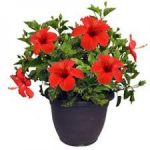
The Roselle flower is apart of the hibiscus family and originated from Central Africa. However it has been spread into places with similar warm climates where it will flourish. The hibiscus plant is usually planted by seeds but will readily grow from cuttings. It is considered a subshrub. It will often grow to around 8 feet tall with pale yellow or white flowers 3-4 inches in diameter. They have a fleshy calyx at the base that is about 0.75 to 1.5 inch wide. This calyx will turn a bright red over the course of it maturing. In the United States
Hibiscus Plant Uses
During WWII, the stem of the Roselle plant was harvested and used to make burlap. It is still gathered in Africa to create fashion rope. Its aromatict flowers have been used in sachets and perfumes. The seeds of the plant have been proven to be a very good chicken feed.
Hibiscus Plant Leaf Uses
Traditional Chinese Medicine uses the hibiscus plant as a way to treat chicken pox and shingles . According to the Traditional Chinese Medicine Wiki it is also used to treat dehydration, heat strokes, toxicity in the body, and a cough.
African Use of Hibiscus
In North Africa they use preparations of the calyx to treat sore throats and topically to treat abscesses and external wounds. Elsewhere in Africa, they have traditionally used it to treat constipation, cancer, liver disease, and cold symptoms. They have also utilized it to treat external injuries in the form of a paste. It is still drank in Iran to relieve their people of high blood pressure. Egypt uses the hibiscus plant for the treatment of cardiac and nervous conditions. Throughout the centuries, the hibiscus plant has been used to treat various ailments by a vast amount of people.
Harvesting Flowers for Hibiscus Tea
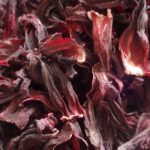
As the flowers appear you will know it is almost time to harvest the calyxes. The flowers are prime for picking a week or two after the flowers first appear. When harvesting it is recommended that you separate the seeds from calyxes due to the very bitter taste.
Hibiscus Tea History/General Facts
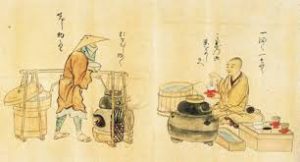
Throughout Central America and the tropical Southern Hemisphere, it seems as though everyone shares a love for Hibiscus Tea. This tea has many different names but the preparation doesn’t differ much from place to place. It’s an infusion made from boiling the leaves or the calyx of the Roselle plant. After this it is often added with spices to create the delicious taste of hibiscus tea. The drink is very versatile, as it can be drank hot as a tea, or it can be drank cold as an “ade”. Hibiscus tea is often enjoyed in tropical climates where the weather is warmer.
Hibiscus Tea Spread to United States
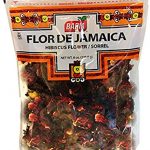
Interest in Mexican cuisine really began the hibiscus tea trend in the United States. Mexcican immigrants brought their knowledge and methods for preparing hibiscus tea with them. Latin stores will more often than not carry hibiscus tea. In the latter, they are typically marked “flor de Jamaica.” You would be surprised how many teas with a red-ish color contain hibiscus.
Hibiscus Tea Benefits

Hibiscus tea has a long list of health benefits associated with it. Among the major benefits are things like anti-inflammatory properties, a ton of antioxidants, and the ability to lower blood pressure. A more in depth list of the benefits will be below:
- Reduces Hypertension/Blood Pressure – For people with high blood pressure, the primary reason for consuming hibiscus tea is to reduce blood pressure. Hibiscus tea can act as an effective method to lower blood pressure.
- Weight loss –Hibiscus tea an also promote weight loss. It helps the flow of digestive enzymes and your metabolism.
- Digestion – it helps regulate bowel movements and improve the health of gastrointestinal tract.
- Anti-Bacterial – Hibiscus tea can also fight off disease and cleanse the inside of your body.
- Anti-Inflammatory – Chronic disease is also thwarted by hibiscus tea. This is because of the boost to the immune system that this herbal tea provides.
- Cholesterol – it helps reduce LDL bad cholesterol.
- Kidney Stones -This herbal tea can help prevent painful kidney stones from forming inside of your body.
- Liver Health – it reduces the amount of fatty liver in patients that suffer from obesity.
- Gout – it acts as a diuretic which can reduce the level of uric acid in gout sufferers.
- Anti-Cancer – it has antioxidants and protocatechuic acid which prohibits tumors and free radicals.
- Anti-Depressant – it has antioxidants, vitamins, and bioflavonoids: which are natural anti depressants.
- Menstrual Pain – it regulates hormones and provides relief for symptoms.
Hibiscus Tea Flavor

The flavor of Hibiscus Tea is usually described as having a bold flavor with slightly tart flavor profile. My favorite brand of hibiscus tea (see below) is actually fairly sweet, even without sweeteners. This is good if you’re someone who enjoys sweeter teas. Most of the people who consume hibiscus tea may call it very sour, but most do not know about my favorite type. Due to hibiscus teas’ appearance, it is often compared with cranberry juices.
Hibiscus Tea Recipes
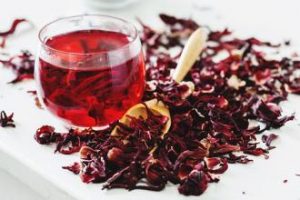
Hibiscus tea is delicious with thicker, sweeter desserts such as ice cream. This is because the tart hints go very well with the sweetness of the ice cream. It blends well with flavors such as allspice, cinnamon, clove, ginger, honey, maple syrup, orange, and vanilla. It has been made into wines, vegetables, and jams, not just tea!
Hibiscus tea is naturally has no caffeine in it, so while you are making the tea, if you would like caffeine you can add regular tea bags to your process. Adding cinnamon sticks to the drink, whether its hot or cold, is very popular among the hibiscus tea community, but you can test different things to find what suits your individual tastes!
Hot Hibiscus Tea
Ingredients (2 Servings)
- Dried Hibiscus: 3 tablespoons
- Water: 4 Cups
- Lemon Juice: 1/2 Teaspoon
- Cinnamon Sticks: 2
- Sugar: 2 Teaspoons
Steps:
- Pour Water (4 Cups) in your herbal teapot. Bring to a boil
- Reduce heat and add the the Dried Hibiscus (3 Tablespoons) and Cinnamon Sticks (2) to the infuser section of your teapot.
- Add Lemon Juice (1/2 Teaspoon) to your teapot and steep on low heat for 10 minutes.
- Remove teapot from heat and turn off range. Allow to cool for 2-3 minutes.
- Pour tea into your desired teacup. If you don’t have an herbal teapot with an infuser, you should pour through a strainer to remove plant pieces. Add sugar to taste.
If you enjoyed this recipe, I suggest reading my related Hibiscus Recipe Guide. It contains an extra cold brew recipe for Hibiscus Tea
Hibiscus Tea Side Effects
As with any herbal teas, I highly recommend consulting your doctor prior to consuming hibiscus tea. I also advise drinking it in moderate portions. This form of tea is considered safe in most instances, but it may interact negatively with prescription medications. Avoiding hibiscus tea if you are pregnant or nursing is also strongly advised!
Purchase the Best Hibiscus Tea
(Commissions Earned)
Easy to Work With; Great Flavor!
I personally prefer to drink loose leaf tea over tea that comes in bags. The ingredients are fresh and very high quality, just what you need to brew some nice hibiscus tea! The primary reasons include freshness, taste, and nutrition value.
Experienced herbal tea drinkers will already be familiar with this large brand, Frontier Natural Products. I support Frontier because it is a member owned co-op.About two weeks ago I purchased a bag of tea from this brand. It contains 1 pound of cut & sifted loose hibiscus flowers. More often than not quality loose leaf tea is expensive, but with Frontier you get fresh and oraganic tea for a reasonable price. Even if you make this tea into your daily diet, the pack will stay fresh for a long time so you can really get a bang for your buck. I have recommended this brand to all of my friends, and they have switched to Frontier and never looked back.
HIBISCUS TEA: CONCLUSION
No matter what you call hibiscus tea, it is popular all over the world due to its delicious taste and multiple health benefits that it provides to the drinker. I highly recommend tampering its tart-sour taste with some other spices such as lemon, vanilla, or cinnamon to find something to fit your individual preferences. This tea is very health and if you can find a recipe that you love, hibiscus tea will be another healthy thing you can add to your day!
This spikey looking plant has a bulb-like calyx that is full of great tasting goodness. It has medicinal properties, but they are only indicated for certain groups of people, if you are pregnant, diabetic, or have any of the other ailments listed you should check with your medical professional to prevent any negative effects when drinking hibiscus tea.
Hibiscus Tea: Comments
Do you share a passion for Hibiscus Tea? Do you have any tips for preparation? Please share your knowledge with the Herbal Tea Time Community by posting a comment below. I appreciate it!
HerbalTeaHour.com is an herbal tea community that truly values transparency and disclosures. We want to be very clear about one thing. In addition to being herbal tea enthusiasts, we do participate in the Amazon Affiliate program. As an Amazon Associate we earn from qualifying purchases.
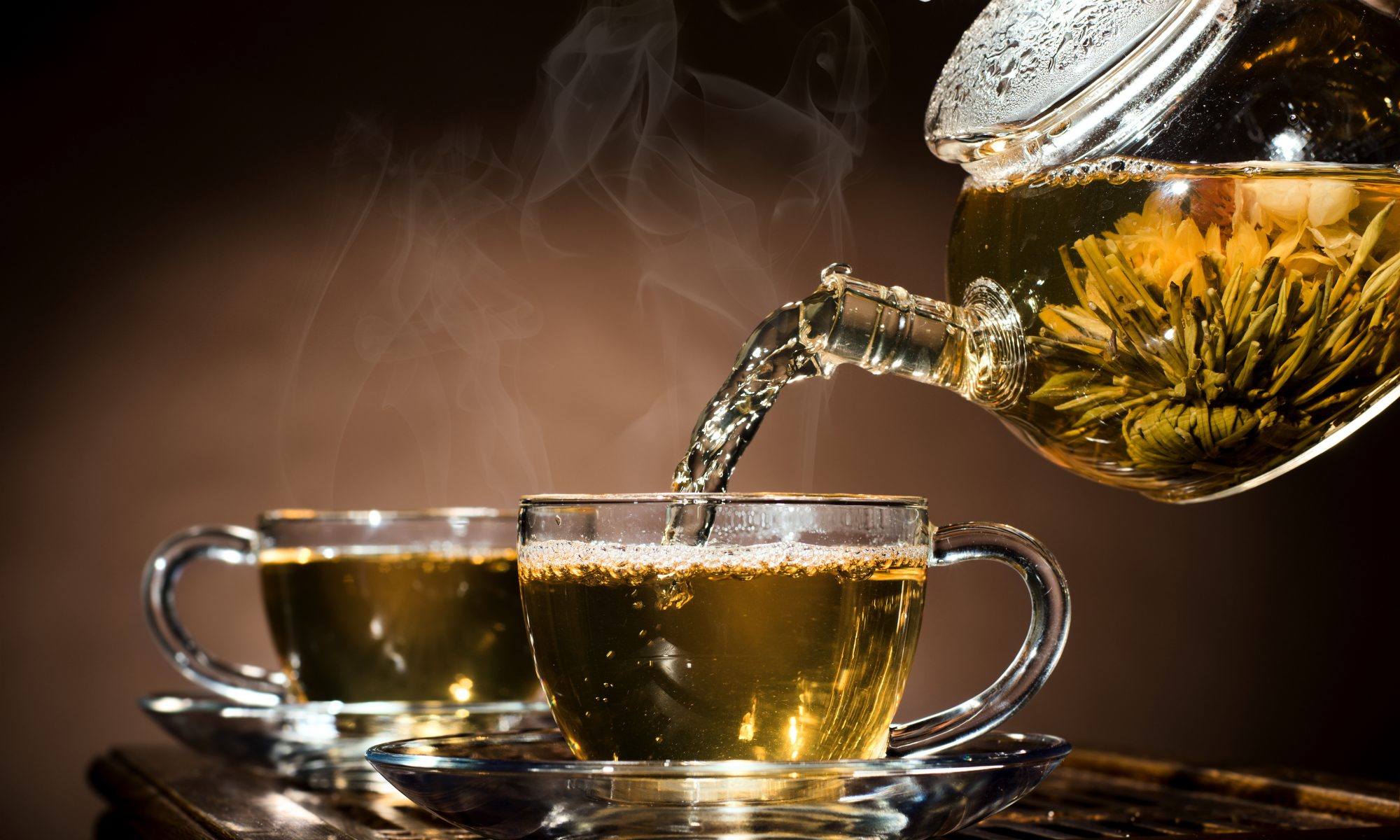
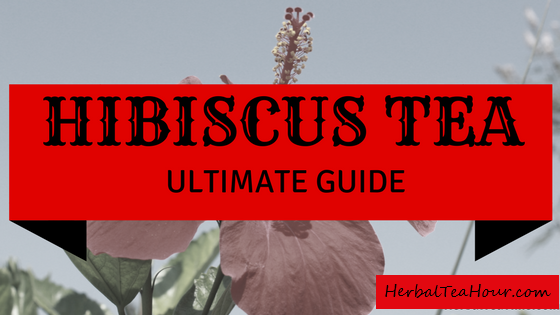

Wow, you go above & beyond with your articles. Who knew that there was so much to learn about hibiscus tea lol
🌺 ☕️